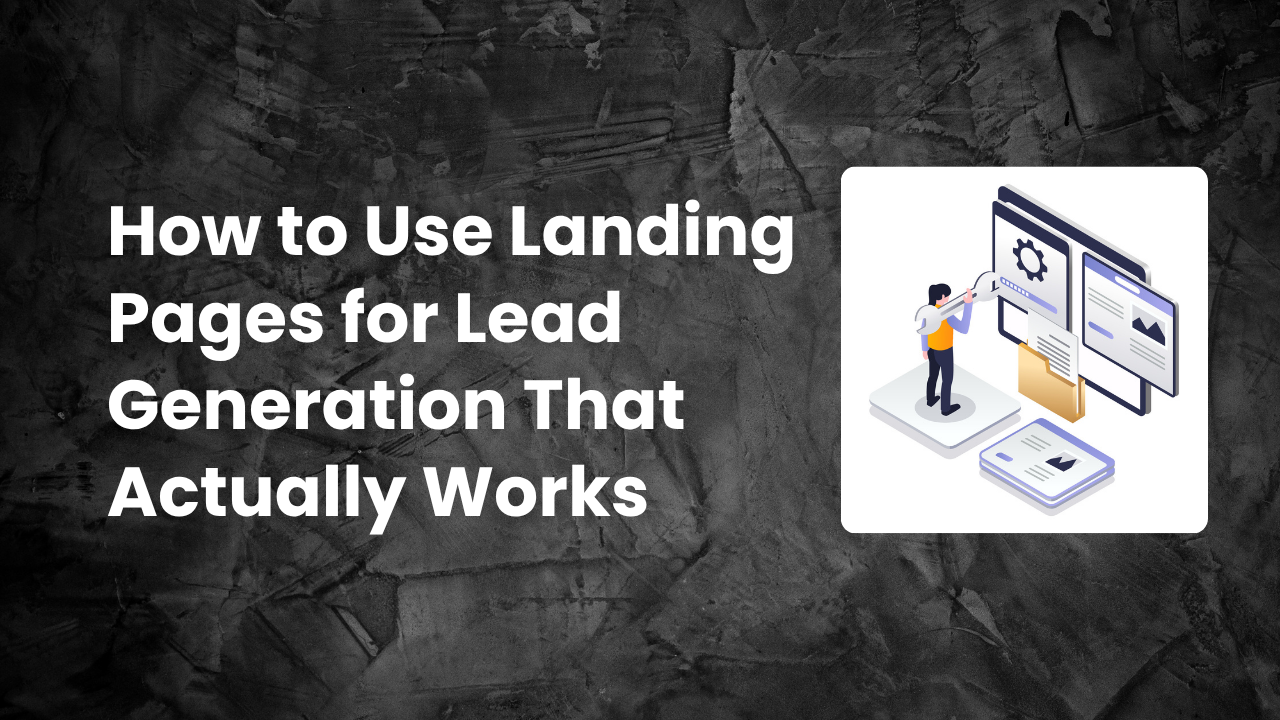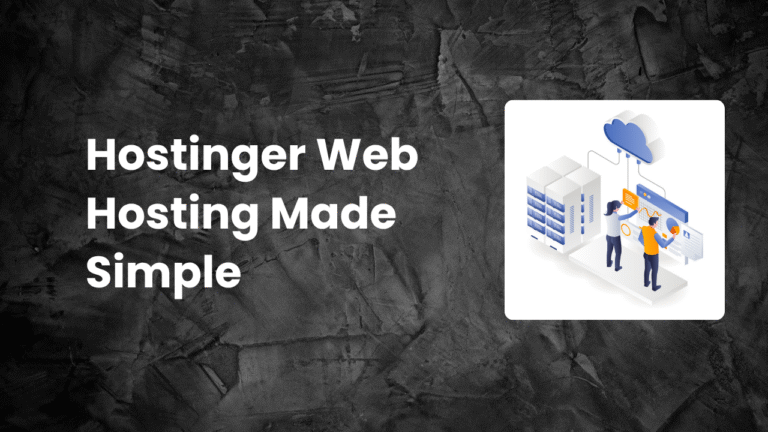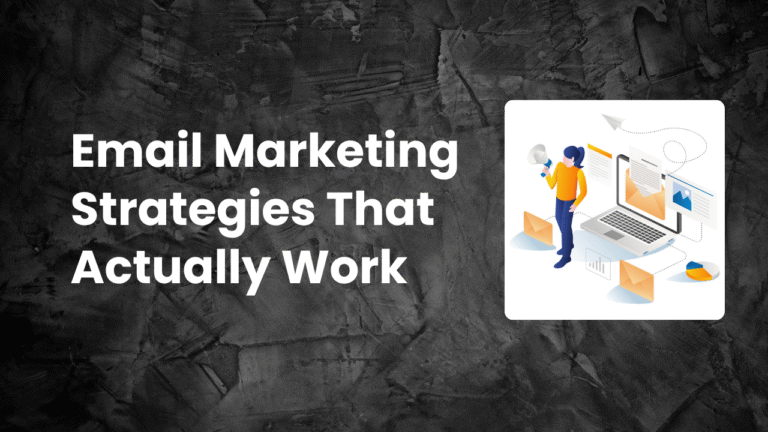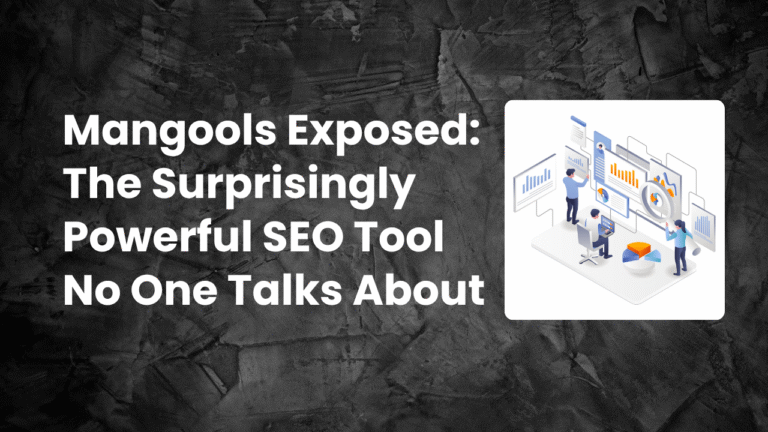How to use landing pages for lead generation is a question many business owners, marketers, and entrepreneurs are asking—and for good reason. Landing pages have become one of the most effective tools for turning anonymous visitors into engaged leads. Whether you’re offering a free resource, collecting sign-ups, or growing your email list, landing pages give you a focused, conversion-driven space to do it.
Let’s talk numbers for a moment. According to HubSpot, companies with 40 or more landing pages generate 12x more leads than those with just 1 to 5 (HubSpot Marketing Benchmark Data). And that’s not all. A report from Unbounce shows that some of the highest-converting landing pages reach conversion rates of up to 27.4%, compared to the average of 4.02% across industries (Unbounce Conversion Benchmark Report). That’s a huge gap—and a massive opportunity.
If you’re not using landing pages to capture leads, you’re likely leaving money on the table. In this detailed guide, you’ll learn how to use landing pages for lead generation the right way—step by step. You’ll discover what makes a high-performing landing page, how to drive the right traffic, what kind of offers convert best, and how to avoid the most common mistakes that kill conversions.
Why Landing Pages Are Critical for Lead Generation
Before diving into how to use them, let’s explore why landing pages work so well for generating leads.
Landing pages are purpose-built. Unlike your homepage or a blog post, they don’t try to do everything at once. Instead, they focus on one clear goal—usually getting the visitor to share their contact information in exchange for something valuable.
This focus eliminates distractions. There are no menus, no sidebars, and no conflicting calls-to-action. Every word, image, and button on the page is carefully crafted to guide the user toward filling out a form or clicking a button.
The result? Higher engagement, lower bounce rates, and more leads. And because the visitor arrived from a targeted source—like a Facebook ad or email campaign—the message on the page can be closely matched to what they were expecting.
That’s why landing pages often convert better than websites or blogs. They meet the visitor exactly where they are and offer something they want.
Understanding the Anatomy of a Lead Generation Landing Page
To use landing pages for lead generation effectively, you need to understand the essential elements that make them work.
At a minimum, every lead generation landing page includes:
- A powerful headline that grabs attention and communicates value.
- A subheadline that reinforces or expands on the offer.
- A brief explanation of what the user will get.
- A lead capture form (typically asking for name and email).
- A compelling call-to-action (CTA) button.
- Visual elements that enhance trust or explain the offer.
- Optional social proof (testimonials, reviews, usage numbers).
Each of these pieces works together to lower friction and increase motivation. You don’t need to write a novel. In fact, shorter pages often work better for simple offers like ebooks or checklists.
For more complex offers—like software trials or consultations—a longer page that explains benefits, answers objections, and builds trust may be more effective.
Choosing the Right Offer for Lead Capture
A landing page without a valuable offer is like a fishing line without bait. If you want people to give you their name and email, you need to give them a reason to do it.
This is where your lead magnet comes in.
Lead magnets can take many forms:
- A free ebook or guide
- A checklist or template
- A webinar or video training
- A discount or coupon
- A free trial or consultation
The best lead magnets solve a specific problem for a specific audience. They’re actionable, easy to consume, and deliver real value—fast.
For example, if you’re targeting freelance designers, a resource like “10 Editable Proposal Templates to Win More Clients” will be far more compelling than a generic newsletter sign-up.
The more valuable and relevant your offer is, the more people will exchange their information for it. That’s the foundation of lead generation.
Writing Landing Page Copy That Converts
Once you’ve chosen your offer, your next job is to write persuasive copy that makes it irresistible.
Start with your headline. It should be clear, benefit-driven, and speak directly to what the user gets. Avoid vague or clever phrases—clarity always wins.
Instead of saying “Revolutionize Your Workflow,” try “Get the Exact Templates I Use to Save 10 Hours Every Week.”
Follow up with a subheadline that explains how or why the offer delivers on that promise. Then, use short paragraphs or bullet points to highlight key benefits.
Remember, you’re not just selling a free PDF—you’re selling the outcome that PDF helps them achieve.
Always write in second person (“you,” “your”) to keep the focus on the reader. And use emotional triggers when appropriate—relief, curiosity, urgency, exclusivity—to make your copy even more engaging.
Designing a Page That Gets Results
Good copy won’t work on a messy page. The design of your landing page plays a huge role in how well it performs.
The goal is simplicity. Remove everything that doesn’t move the user toward the action you want them to take.
That means:
- No navigation menu
- No footer with multiple links
- No unrelated content
Your form and CTA should be above the fold (visible without scrolling), and your color scheme should direct the eye to the CTA button.
Use high-quality visuals like:
- Mockups of your ebook or course
- Screenshots of your product
- A short explainer video
- Customer photos with testimonials
Design isn’t about looking pretty—it’s about guiding attention and removing confusion. Use contrast, spacing, and hierarchy to make the path to conversion clear and easy.
Building Trust and Credibility
When you ask for someone’s email, you’re asking for trust. People are more protective of their inboxes than ever, which is why trust-building elements are critical.
Here’s how to do it:
- Add a short testimonial from a real user.
- Include privacy reassurance (“We’ll never spam you or sell your email.”)
- Show credibility with logos of companies you’ve worked with or media mentions.
- Display the number of people who’ve already downloaded the resource (“Join 5,000+ marketers…”)
Even small cues like a secure padlock symbol near the form or your business address in the footer can increase trust.
Remember: If people don’t trust you, they won’t give you their contact info—no matter how great your offer is.
Creating a Powerful Call-to-Action
Your call-to-action (CTA) is the final push that turns a visitor into a lead.
That tiny bit of text on your button is more important than you might think. A generic “Submit” or “Download” doesn’t cut it anymore.
Instead, your CTA should:
- Reinforce the benefit
- Create urgency or exclusivity
- Reduce friction
Use specific phrases like:
- “Send Me the Guide”
- “Start My Free Trial”
- “Get My Cheat Sheet”
- “Claim My Spot Now”
Button color and placement also matter. Make sure your CTA stands out visually and appears in multiple places if the page is long.
If you’re using a form, make it short. Ask only for what you absolutely need. For most lead magnets, name and email are plenty.
Driving the Right Traffic to Your Landing Page
Even the best landing page in the world won’t work if nobody sees it. Once your page is live, you need to drive targeted traffic to it.
Some of the most effective sources include:
- Google or Facebook Ads
- Email campaigns
- Social media posts
- Blog post CTAs
- Influencer mentions
- YouTube video links
- SEO (for long-term traffic)
What matters is relevance. If your ad says “Free Marketing Checklist,” your landing page better deliver exactly that. Consistency between ad and page increases trust and boosts conversion rates.
For paid traffic, track your cost per lead and experiment with different creatives, headlines, and audiences. For organic traffic, make sure your landing page is optimized for SEO with the right keyword placement and metadata.
Following Up After the Lead
Capturing the lead is just the beginning. Now it’s time to follow up and nurture that relationship.
Immediately after someone opts in, send a welcome email. Deliver the promised resource. Thank them. Remind them who you are. Then continue sending value-driven emails that build trust and move them closer to your paid offer.
Email automation tools like MailerLite, ActiveCampaign, ConvertKit, or Mailchimp make this easy.
You can also use lead scoring and segmentation to tailor your follow-ups based on behavior—clicks, downloads, replies, etc.
The real value of landing pages isn’t just the lead—it’s the lifetime customer that lead becomes when nurtured correctly.
Testing and Optimizing Your Page
No landing page is perfect on the first try. That’s why A/B testing is a must if you’re serious about lead generation.
You can test:
- Headlines
- Subheadlines
- CTA button text or color
- Images or videos
- Page length
- Form fields
Start with the biggest variables first—like the offer or headline—then refine smaller details as you go. Tools like Unbounce, Leadpages, and Google Optimize make testing simple.
Track metrics like:
- Conversion rate
- Bounce rate
- Time on page
- Form completion rate
Make one change at a time so you know what’s working and why. Over time, these small improvements can result in a big increase in leads.
Avoiding Common Mistakes
Here are a few traps to avoid when using landing pages for lead generation:
- Too many distractions: Keep the page focused on one action only.
- Weak offer: Make sure your lead magnet is specific and valuable.
- Unclear CTA: The user should never be confused about what to do next.
- Too many form fields: Every extra field reduces conversions.
- No trust elements: Without testimonials or privacy statements, users may hesitate.
- Poor mobile optimization: If your page doesn’t work on phones, you’re losing half your traffic.
Fix these and you’ll see your lead generation results improve immediately.
Conclusion: Lead Generation Starts With the Right Page
Learning how to use landing pages for lead generation is a game-changer for any business looking to grow online. These focused, high-converting pages help you turn traffic into relationships—and relationships into revenue.
With the right strategy, copy, offer, and follow-up system, landing pages can consistently deliver quality leads on autopilot.
Don’t overthink it. Start simple. Focus on the value you’re offering. Write like a human. Remove distractions. And always, always test.
The power of a single, well-optimized landing page can change your entire funnel—and your business.





